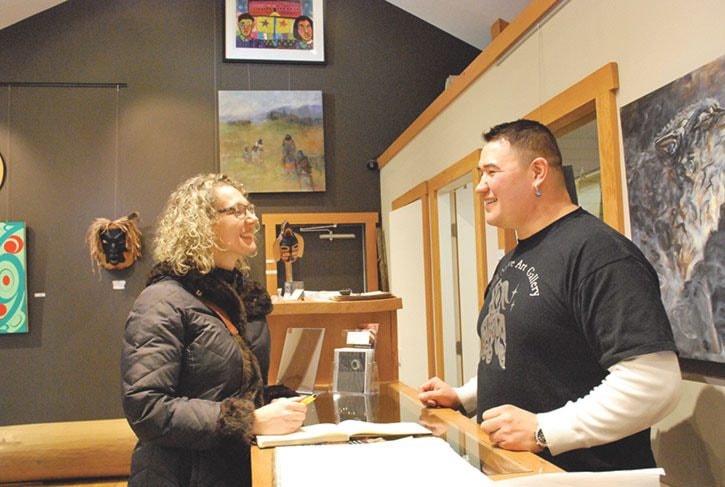Welcome to The Alberni Valley!
The sign was welcoming and a friendly reminder that I was only a short time away from catching up with some of my friends from my previous visit to the Alberni Valley.
I had left Ontario, cold and snowy, to travel to more temperate climes: all the splendour of truly wintery, mountainous scenery, without the snow days!
I was surprised to see that there were other signs as well, that were much less welcoming and something I hadn’t noticed when I was here in the summer.
“Closed for the season”, read one sign. “Closed on Sundays and Mondays” read another.
“By appointment only” was also a glitch in the schedule of this busy traveller who was looking to experience all that the Alberni Valley had to offer in the winter.
The signs might just as well have read: “You will have to take your spending money elsewhere”.
My first impression of Port Alberni in the winter: beautiful, but not open for business.
I was a confused visitor.
How could a place that is surrounded by scenery that is even more breathtaking in the winter, be missing such an opportunity to engage in the tourist trade?
I soon discovered that the root of the problem was something that I had been exposed to briefly during my previous visit to the area: that Port Alberni is regarded as just the place you drive through in order to get to other places on the West Coast.
As a result, tourism in the the Alberni Valley is highly dependent upon traffic going through on the highway on the way to Tofino, for example. Getting tourists to stop is the ultimate challenge. An even more daunting challenge in winter, when fewer make the trek to Tofino and Ucluelet on the Island’s west coast.
Since I had now encountered the information about being on the highway to Tofino for the second time, I wanted to find out more. I figured that if any place would be able to explain this phenomenon to me, it would be the visitors’ centre, run by the local chamber of commerce. Ironically, I tried to go there on a Monday, and the centre was closed.
(Editor’s note: The chamber was closed on Mondays for a number of weeks last winter due an economic shortfall in building the new visitors’ centre.)
So I approached some local businesses, looking for answers.
“There is only one route to Tofino and it goes through Port,” said one business owner. “Over one million cars go through our town in any given summer. It would be nice if we could stop and keep a mere handful.”
Her sentiments were echoed by three other business owners in the South Port corridor.
I also discovered that some businesses have accepted the reality of the Alberni Valley’s location and aim to capitalize on traffic.
Gordon Dick, a Tseshaht First Nation artist and owner of Ahtsik Native Art Gallery even went so far as to choose a side of the highway. He used statistics from the Nuu-chah-nulth Economic Development Corporation to help make his decision.
“I chose the location of my gallery to cater to tourists on their way up the highway to Tofino. My gallery is on this side of the road so that I can attract them on the way up, when they still have money in their pockets.”
The story was the same in the downtown where businesses were struggling to build a market based on transients. I was pleased to see though that some of these businesses, like Gayle’s Fashions and GT Vintage (now called The Place and located in Harbour Quay) would also open upon request, which was a nice way to accommodate those that did make it to the valley with money to spend.
The Alberni Valley, like every region, faces the challenge of figuring out what approach to take when it comes to economic development.
After visiting in the winter and the summer, I agree with local residents and businesses that in the current environment, they are dependent upon the accidental tourist, of which there are even fewer in the winter. I too did not view the valley as a destination, and acknowledging that first impression, is an essential component to moving forward with a collaborative economic development approach for the valley.
I left the Alberni Valley last winter with a greater understanding of the challenges of marketing to transients, but still not happy about the amount of seasonal closures. I couldn’t help but wonder whether or not closing in the winter was the best way to deal with fewer tourists.
I had left the Alberni Valley the previous summer, thinking that something, however small, needed to be done to put the area on the map for tourists flying into the Comox airport.
Putting those two first impressions together provided me with my last impression—if the Alberni Valley is not easy to find, and the economy is dependent upon the accidental tourist, the Valley would need strong leadership, vision, and cooperation with other areas in order to overcome these challenges, regardless of the season.
I am hopeful they will succeed.
This is the last of three parts. The first two articles appeared in the Nov. 1 and Nov. 8 editions and are also available online at www.albernivalleynews.com.
